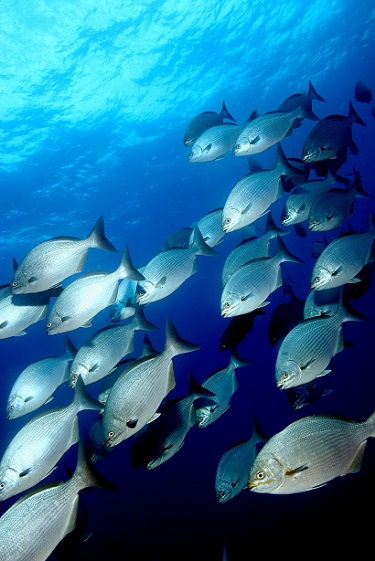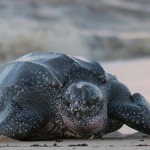
Some reef species can cross oceanographic barriers using 'stepping stones'. Image: Osmar J. Luiz

Body size can help fish cross oceanographic barriers. Image: Osmar J. Luiz
A large body size or the ability to raft on flotsam across an ocean may help tropical fish spread to new homes.
Reef fish species that occur on both sides of known oceanographic dispersal barriers have special features that have enabled them to cross these obstacles. An international team of scientists have analysed 985 tropical fish species across two major Atlantic marine barriers and identified various success predictors, such as adult size and/or living in a variety of habitats.
Researchers have previously assumed that major variations in larval biology, such as the duration of the larval phase, were the main determinants of species dispersal. However, a new study suggests that the traits in adult fish may play an important role.
“In our analyses, variation in larval-development mode, which is highly correlated with the time larvae spend as plankton, wasn’t a significant factor and adult traits have explained better the dispersal potential for those fishes,” said
You may also like…







Fish Care Tips
November 18, 2011
I like the helpful information you provide in your articles. I will bookmark your weblog and check again here regularly. I’m quite certain I’ll be informed a lot of new stuff proper right here! Best of luck for the following!